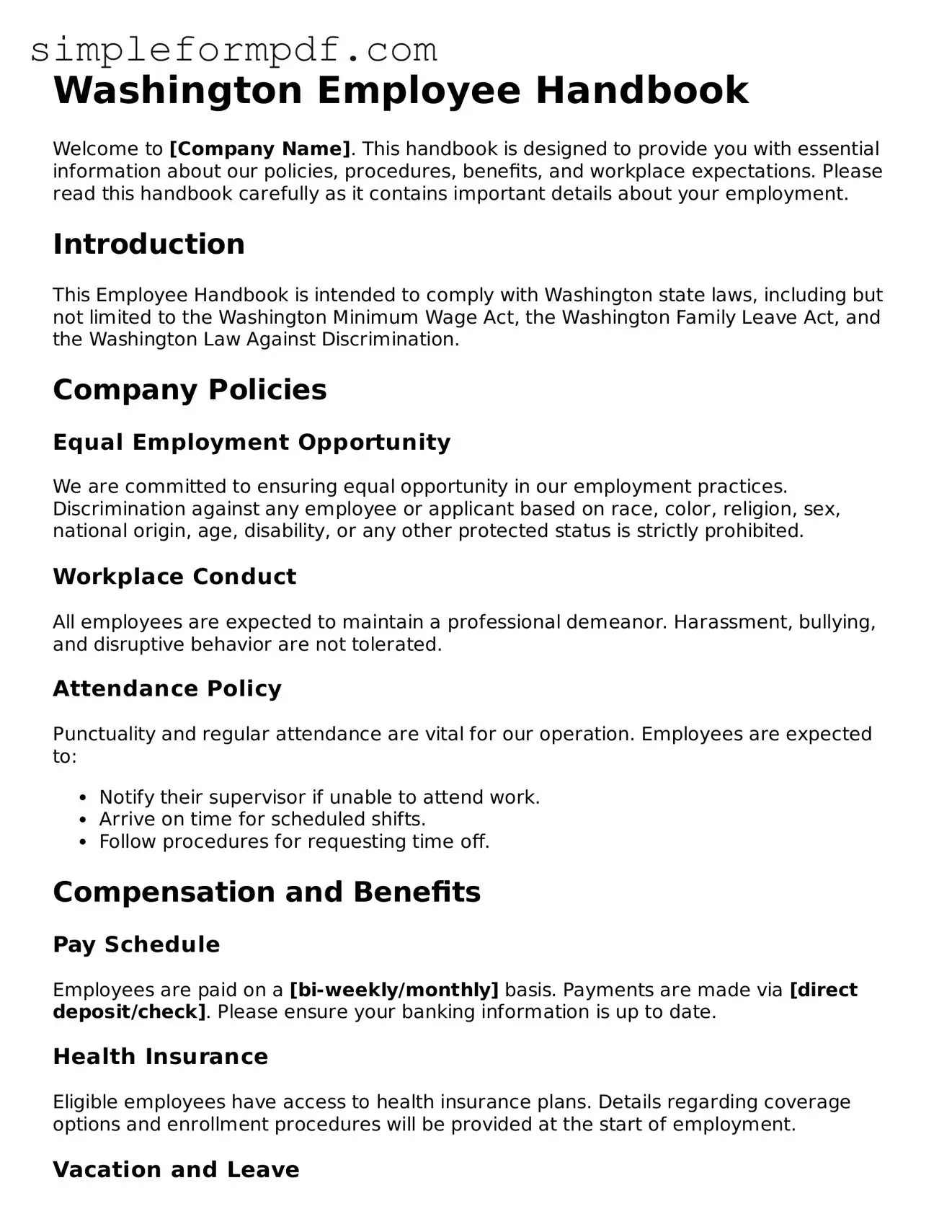Washington Employee Handbook
Welcome to [Company Name]. This handbook is designed to provide you with essential information about our policies, procedures, benefits, and workplace expectations. Please read this handbook carefully as it contains important details about your employment.
Introduction
This Employee Handbook is intended to comply with Washington state laws, including but not limited to the Washington Minimum Wage Act, the Washington Family Leave Act, and the Washington Law Against Discrimination.
Company Policies
Equal Employment Opportunity
We are committed to ensuring equal opportunity in our employment practices. Discrimination against any employee or applicant based on race, color, religion, sex, national origin, age, disability, or any other protected status is strictly prohibited.
Workplace Conduct
All employees are expected to maintain a professional demeanor. Harassment, bullying, and disruptive behavior are not tolerated.
Attendance Policy
Punctuality and regular attendance are vital for our operation. Employees are expected to:
- Notify their supervisor if unable to attend work.
- Arrive on time for scheduled shifts.
- Follow procedures for requesting time off.
Compensation and Benefits
Pay Schedule
Employees are paid on a [bi-weekly/monthly] basis. Payments are made via [direct deposit/check]. Please ensure your banking information is up to date.
Health Insurance
Eligible employees have access to health insurance plans. Details regarding coverage options and enrollment procedures will be provided at the start of employment.
Vacation and Leave
Employees are entitled to vacation time and paid leave. The accrual of vacation days will be outlined in your employment contract.
Health and Safety
We prioritize a safe working environment. Employees must adhere to safety guidelines and report any unsafe conditions immediately.
Employee Acknowledgment
Please sign and date below to acknowledge your receipt of this handbook and your understanding of its contents.
Employee Name: _____________________
Employee Signature: _____________________
Date: _____________________
